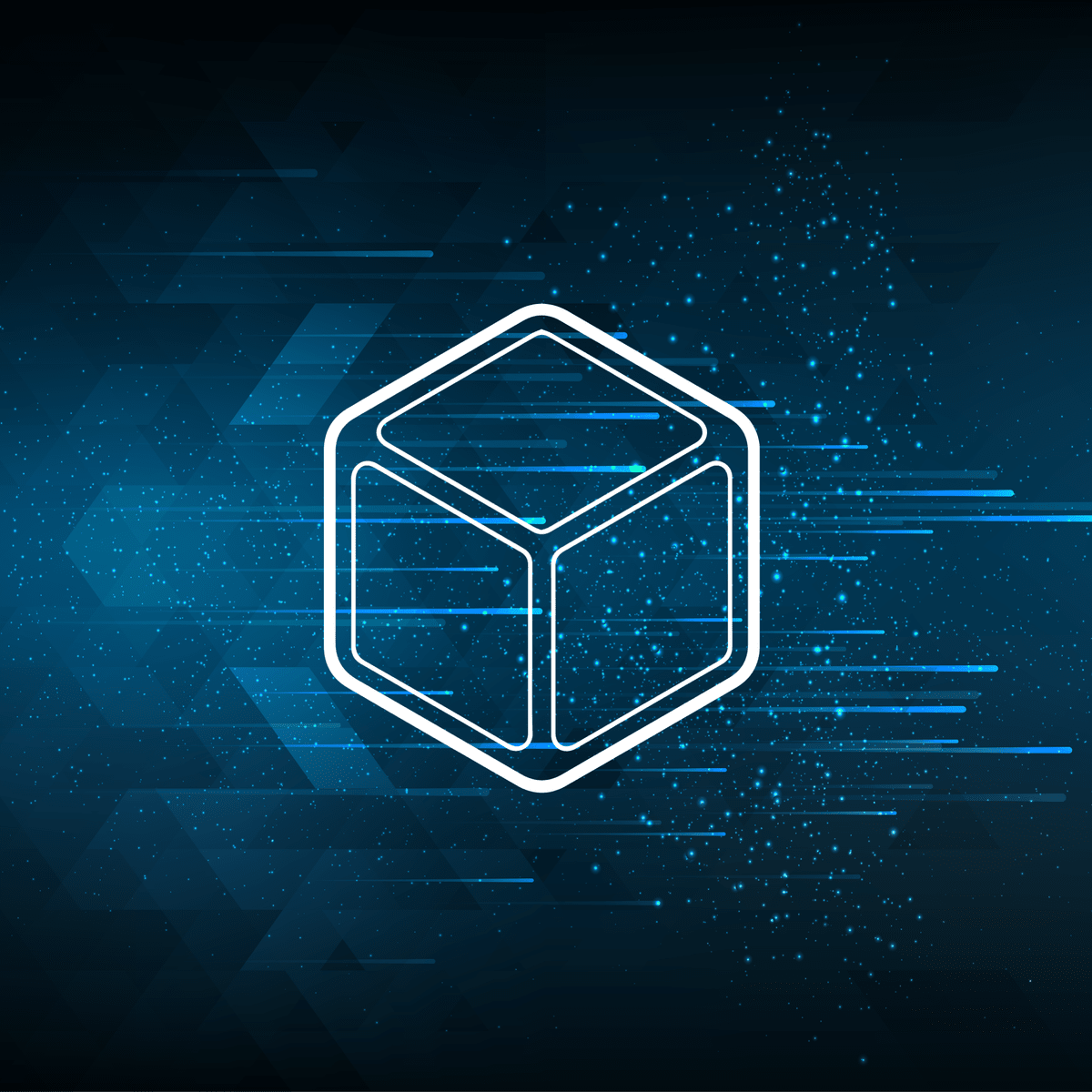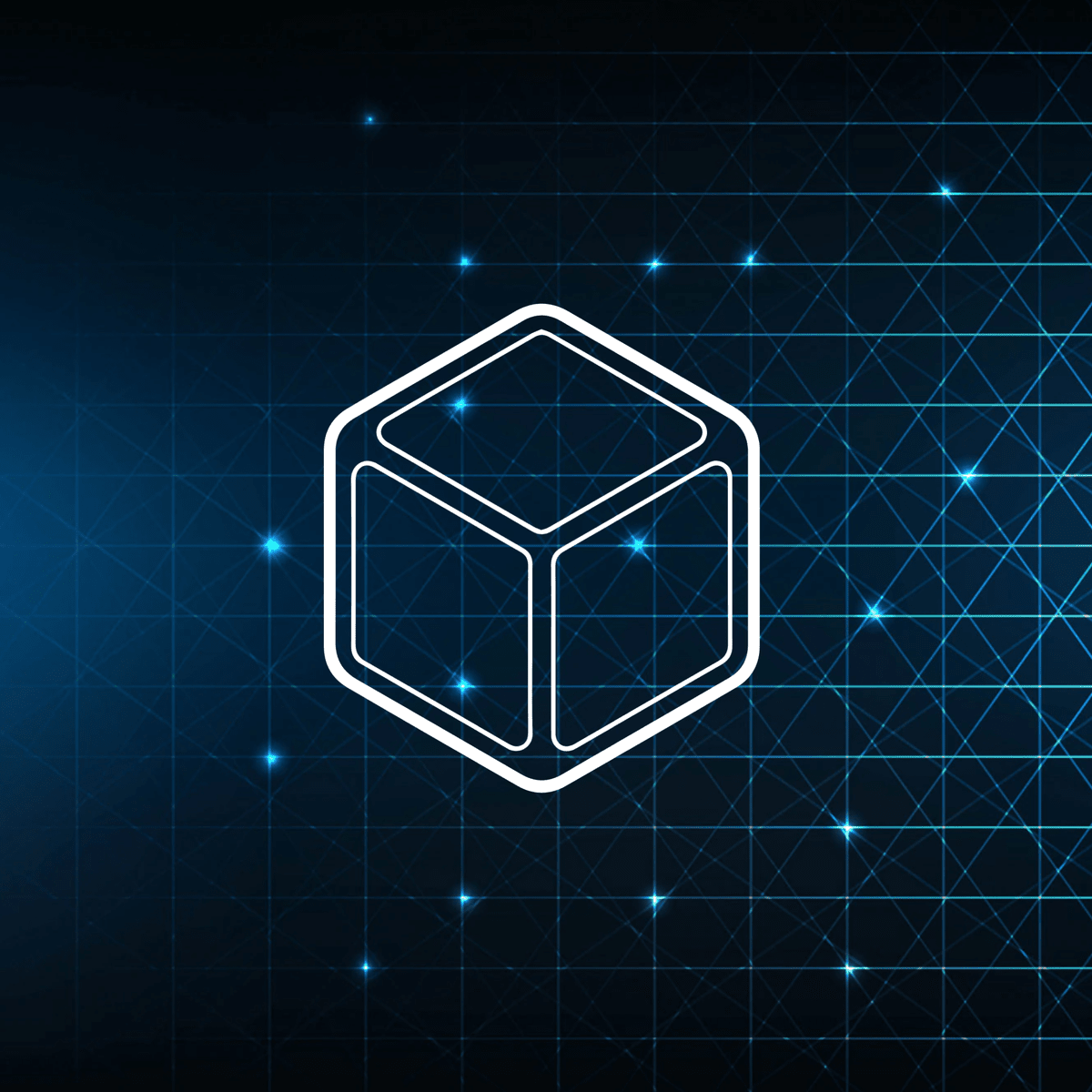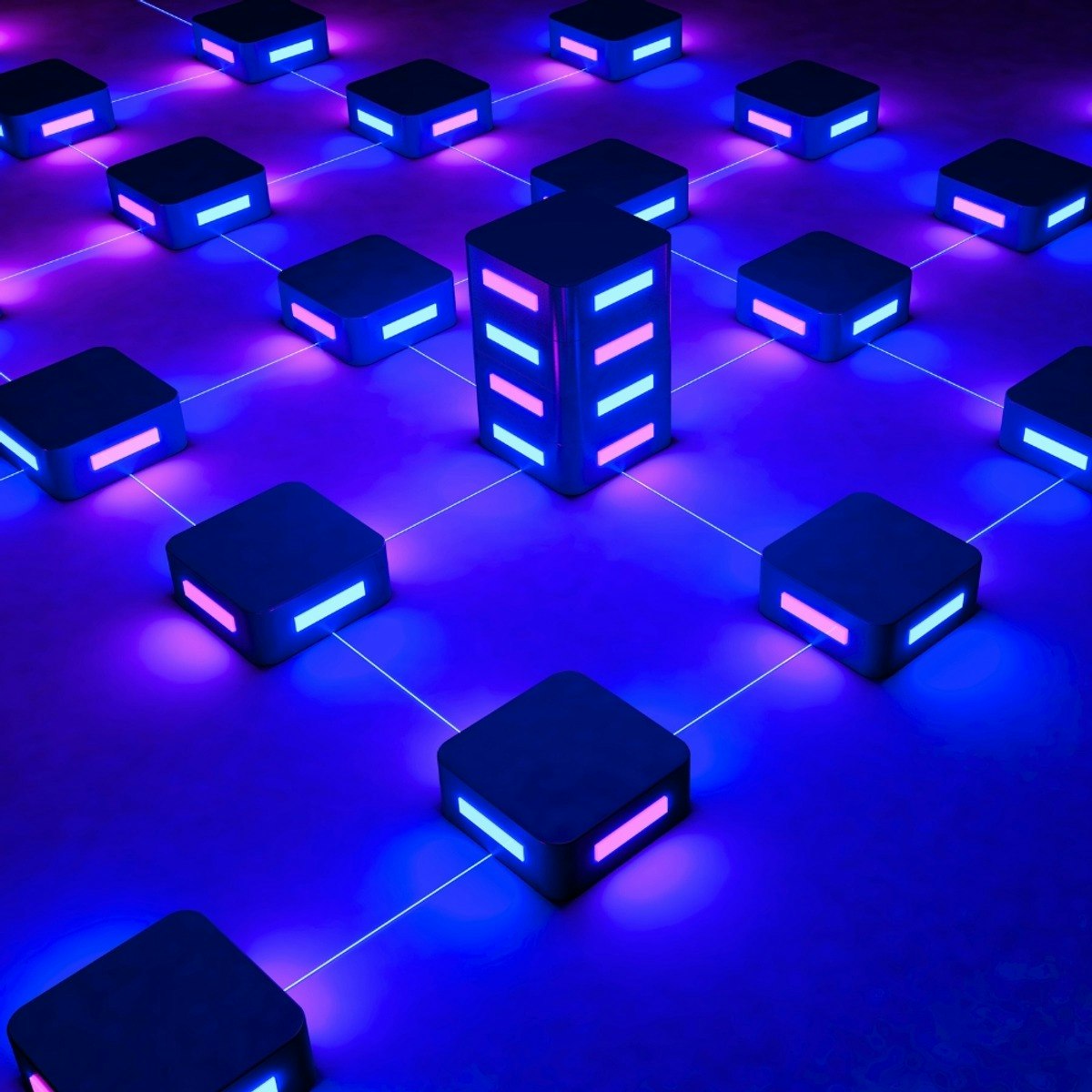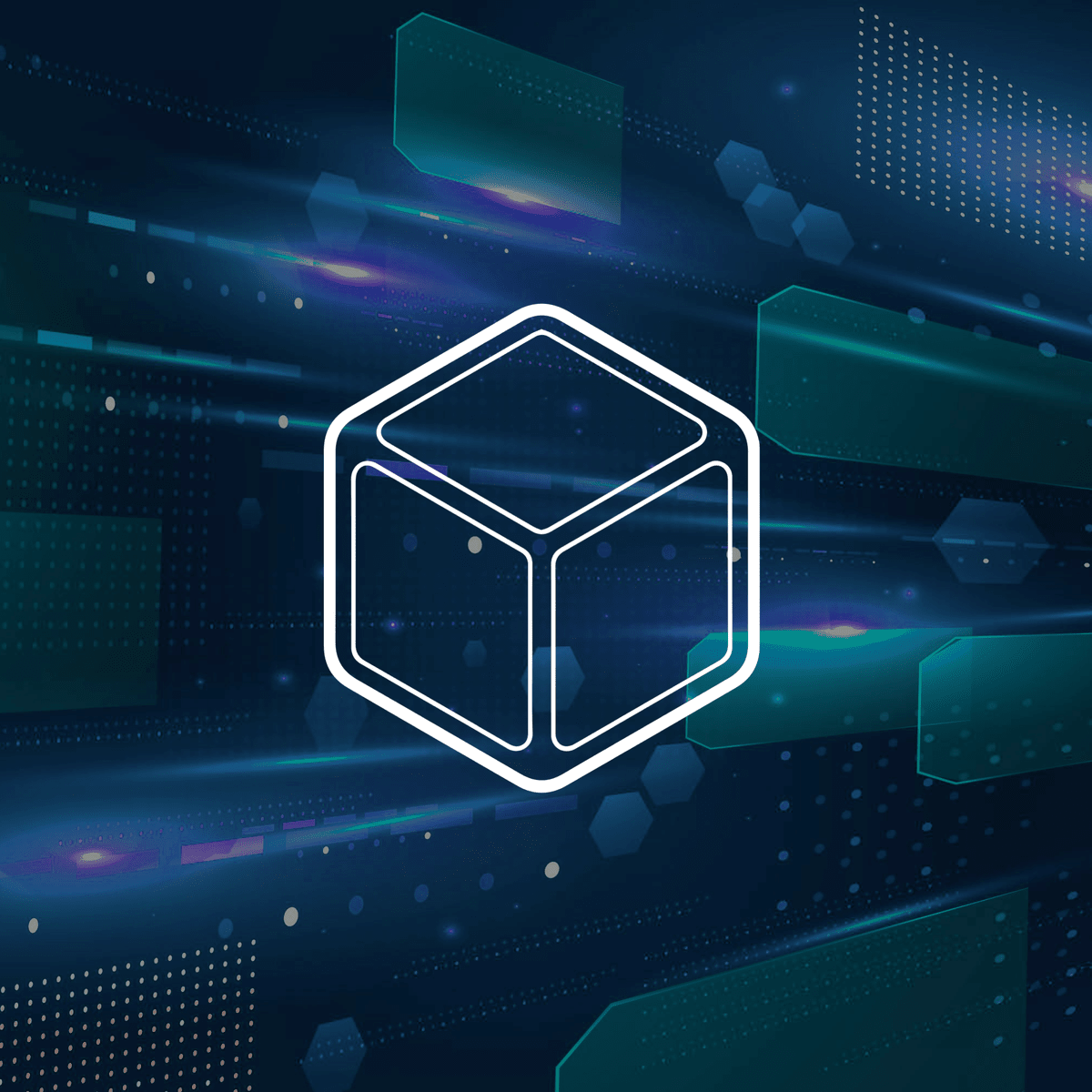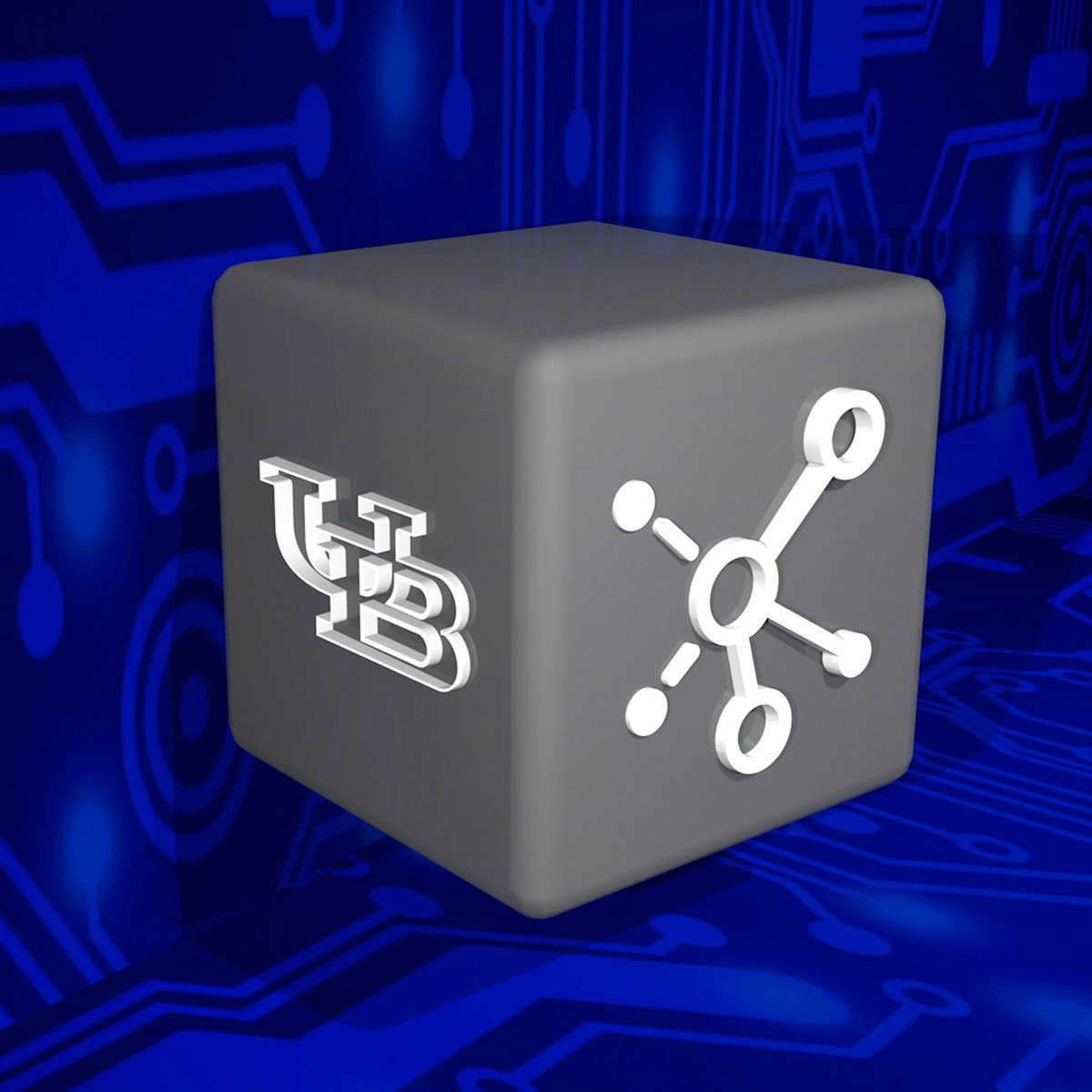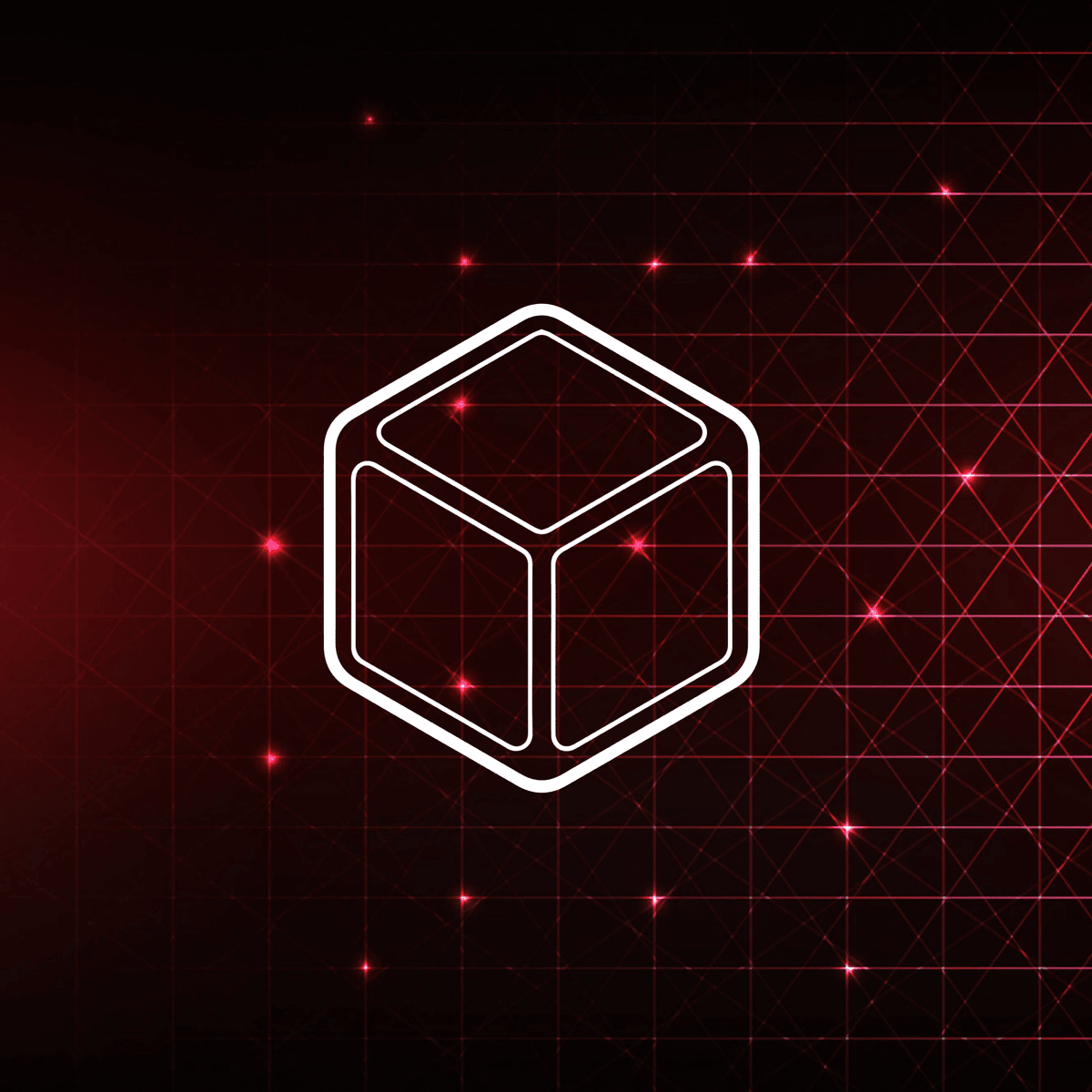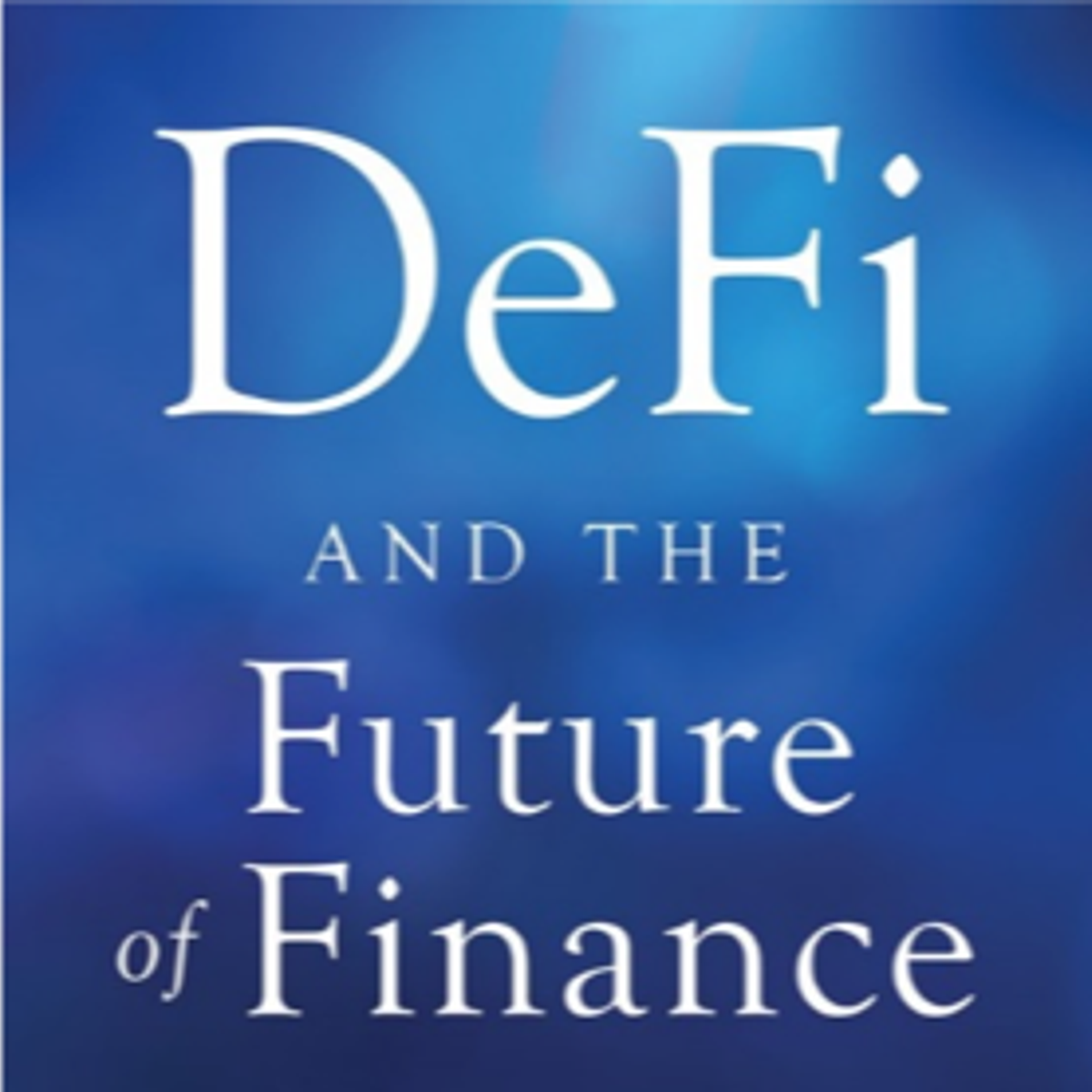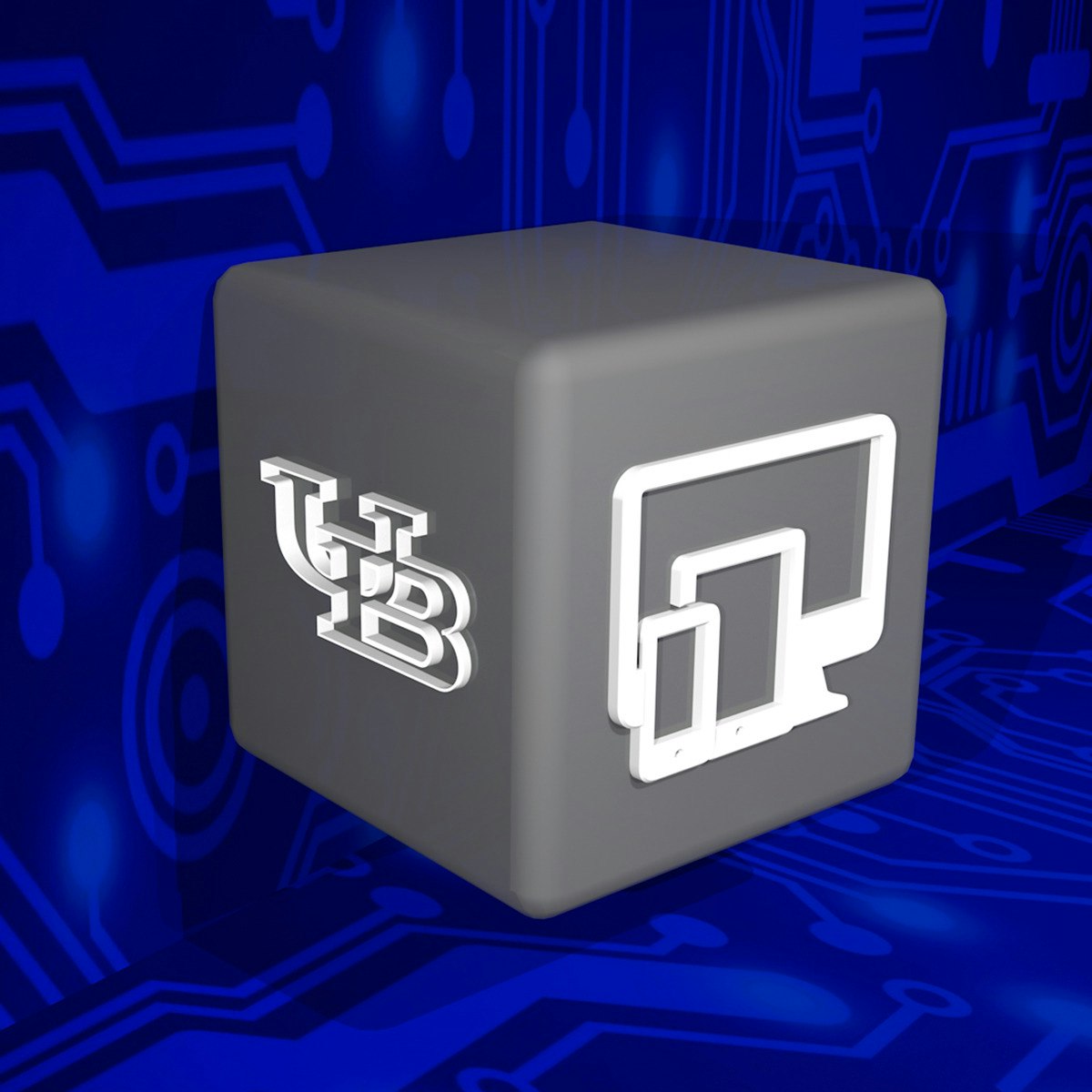Blockchain Architect
Embarking on a Career as a Blockchain Architect
A Blockchain Architect is a pivotal figure in the technology landscape, responsible for designing and overseeing the implementation of blockchain-based solutions. This role involves making high-level design choices, selecting appropriate blockchain systems and protocols, and ensuring these solutions align with an organization's strategic goals. As businesses increasingly explore the transformative potential of blockchain, the demand for skilled architects who can navigate this complex technology is on the rise.
Working as a Blockchain Architect can be incredibly engaging due to the innovative nature of the field. You'll often find yourself at the forefront of technological advancements, creating systems that can revolutionize industries from finance to healthcare. The role also offers significant intellectual challenges, requiring a deep understanding of distributed ledger technology, cryptography, and system integration. Furthermore, the impact you can have by designing secure, transparent, and efficient decentralized applications provides a strong sense of purpose and accomplishment.
Introduction to Blockchain Technology
Blockchain technology is a rapidly evolving field with the potential to reshape numerous industries. Understanding its fundamental concepts is the first step for anyone considering a career as a Blockchain Architect. This section will introduce the core ideas behind blockchain, its key components, and its diverse applications beyond the widely known realm of cryptocurrencies.
What is Blockchain? Unpacking the Core Principles
At its core, a blockchain is a distributed, immutable ledger. Imagine a digital record book that is duplicated and spread across a network of computers. When a new transaction or piece of data is added, it's grouped into a "block" which is then cryptographically linked to the previous block, forming a "chain." This structure makes the data inherently secure and resistant to tampering.
The foundational principles of blockchain technology include decentralization, immutability, and transparency. Decentralization means there's no single point of control; the ledger is maintained by many participants in the network. Immutability refers to the fact that once data is recorded on the blockchain, it cannot be altered or deleted. Transparency allows participants to view the transactions (though the level of anonymity can vary depending on the blockchain's design).
For those entirely new to the concept, think of it like a shared Google Doc that everyone in a group can see. When someone makes a change, it's visible to all, and the history of changes is locked in. However, unlike a typical shared document, a blockchain is secured by complex mathematical problems (cryptography) and agreed upon by many independent verifiers, making it exceptionally robust against unauthorized changes or central failure points.
The Building Blocks: Decentralization, Cryptography, and Consensus
Decentralized networks are fundamental to how most blockchains operate. Instead of relying on a central server or authority, the blockchain is distributed across numerous computers (nodes) in a peer-to-peer network. This distribution enhances resilience, as the system can continue to function even if some nodes go offline. It also promotes censorship resistance, as no single entity can unilaterally control the data or transactions.
Cryptography provides the security and integrity of the blockchain. Techniques like cryptographic hashing are used to create a unique digital fingerprint for each block. These hashes link blocks together in a secure chain, making it computationally infeasible to alter past blocks without invalidating the entire chain. Public-key cryptography is also used to secure transactions and manage user identities through digital signatures.
Consensus mechanisms are the protocols that network participants use to agree on the validity of transactions and the state of the ledger. Different blockchains employ various consensus algorithms, such as Proof of Work (PoW), used by Bitcoin, or Proof of Stake (PoS), which is generally more energy-efficient. These mechanisms ensure that all copies of the distributed ledger are consistent and that new blocks are added in a trustworthy manner.
More Than Just Crypto: Diverse Applications of Blockchain
While cryptocurrencies like Bitcoin were the first prominent application of blockchain technology, its potential extends far beyond digital cash. The ability to create secure, transparent, and tamper-proof records of transactions and data has opened doors to innovation in numerous sectors.
Industries such as supply chain management are leveraging blockchain to enhance transparency and traceability of goods, from origin to consumer. In healthcare, blockchain can facilitate secure sharing of patient data while maintaining privacy. Other applications include secure voting systems, intellectual property management, digital identity verification, and the creation of smart contracts that automatically execute agreements when predefined conditions are met.
The breadth of these applications underscores the transformative power of blockchain. As organizations continue to explore and implement these solutions, the role of the Blockchain Architect in designing and guiding these initiatives becomes increasingly critical. Understanding this wider context is essential for anyone aspiring to this career path. You can explore various blockchain applications further through OpenCourser's blockchain category.
Role of a Blockchain Architect
Understanding the multifaceted role of a Blockchain Architect is crucial for anyone considering this career path. These professionals are more than just senior developers; they are strategic thinkers and system designers who shape how organizations leverage blockchain technology. Their work involves a blend of technical expertise, business acumen, and collaborative leadership.
Core Responsibilities: Designing Blockchain Systems and Selecting Protocols
A primary responsibility of a Blockchain Architect is to design comprehensive blockchain solutions tailored to specific business needs. This involves analyzing requirements, defining the architecture of the blockchain network, and making critical decisions about its components. They determine whether a public, private, or consortium blockchain is most suitable, and select appropriate consensus mechanisms, security protocols, and data structures.
Choosing the right blockchain platform and protocols is a key aspect of their job. This might involve evaluating options like Ethereum, Hyperledger Fabric, Corda, or others based on factors such as scalability, security, performance, and the specific use case. The architect ensures that the chosen technologies align with the project's goals and can effectively address the challenges at hand.
Furthermore, architects are responsible for developing technical documentation, including architecture diagrams and system specifications, to guide the development and implementation process. They also stay updated with emerging blockchain trends and technologies to inform future development and innovation within the organization.
To gain a foundational understanding of how blockchain systems are designed, consider exploring courses that cover these core concepts. These resources can provide insights into the decision-making processes involved in blockchain architecture.
Integration with Existing IT Infrastructure
Blockchain solutions rarely exist in a vacuum. A significant challenge and responsibility for a Blockchain Architect is to ensure seamless integration with an organization's existing IT infrastructure. This includes legacy systems, databases, cloud services, and other enterprise applications. The architect must design solutions that can communicate and exchange data effectively with these existing systems while maintaining security and data integrity.
This integration process requires a deep understanding of both blockchain technology and traditional enterprise IT. Architects need to consider aspects like API design, data mapping, synchronization strategies, and potential performance bottlenecks. They work to ensure that the new blockchain system enhances, rather than disrupts, current operations.
Moreover, architects must plan for scalability and future growth. As the adoption of the blockchain solution expands, it needs to handle increasing transaction volumes and data loads without compromising performance. This involves designing for interoperability not just with current systems, but also with potential future technologies and platforms.
Understanding how blockchain fits into the broader enterprise landscape is key. The following book provides insights into the business applications of blockchain, which often involve integration with existing systems.
Collaboration with Developers, Stakeholders, and Security Experts
Blockchain Architects act as a crucial bridge between various teams and stakeholders. They collaborate closely with development teams to translate architectural designs into functional code, providing guidance and ensuring adherence to best practices. This involves conducting code reviews and mentoring junior team members.
Effective communication with business stakeholders is equally important. Architects must be able to explain complex technical concepts in understandable terms to non-technical audiences, including executives and product managers. They need to understand business requirements and ensure that the blockchain solution aligns with strategic objectives.
Security is paramount in blockchain systems, and architects work hand-in-hand with security experts. They are responsible for designing secure blockchain networks, including implementing appropriate cryptographic methods, access controls, and threat models. This collaboration ensures that potential vulnerabilities are identified and mitigated throughout the design and development lifecycle.
The ability to work effectively in a team and communicate complex ideas is vital. Courses focusing on the business aspects of blockchain can help develop this understanding.
Technical Skills and Tools
A Blockchain Architect must possess a robust set of technical skills and be proficient with a variety of tools to design and implement effective blockchain solutions. This section delves into the programming languages, blockchain platforms, and security knowledge that are essential for success in this role. These competencies form the bedrock upon which innovative and secure decentralized systems are built.
Programming Languages: Solidity, Go, Python
Proficiency in relevant programming languages is fundamental for a Blockchain Architect. While an architect may not be coding full-time, they need to understand the languages used by their development teams to make informed design decisions and review code effectively. Several languages are prominent in the blockchain space.
Solidity is arguably the most well-known language for writing smart contracts, particularly on the Ethereum blockchain and other Ethereum Virtual Machine (EVM) compatible platforms. Understanding Solidity is crucial for architects designing decentralized applications (dApps) and systems involving automated agreements. Other languages like Vyper also target the EVM with a focus on security and simplicity.
Go (Golang) is another popular language in the blockchain domain, notably used in developing platforms like Hyperledger Fabric. Its performance, concurrency features, and strong standard library make it suitable for building core blockchain infrastructure. Python, known for its versatility and extensive libraries, is often used for scripting, developing tools, and creating interfaces for blockchain applications. Java and C++ also see use in specific blockchain implementations.
Developing a strong command of these languages, especially Solidity for smart contracts, is highly recommended. Online courses can provide practical experience in writing and deploying code for blockchain environments.
Blockchain Platforms: Ethereum, Hyperledger, Corda
A Blockchain Architect must have a deep understanding of various blockchain platforms to select the most appropriate one for a given project. Each platform has its own architecture, consensus mechanism, smart contract capabilities, and suitability for different types of applications.
Ethereum is a leading platform for decentralized applications and smart contracts, known for its large developer community and flexibility. Hyperledger, a project hosted by the Linux Foundation, offers a suite of tools and frameworks for building enterprise-grade, permissioned blockchains. Hyperledger Fabric is one of its most popular frameworks, designed for business applications requiring privacy and permissioned access. R3 Corda is another enterprise-focused platform, particularly prominent in the financial services industry, designed for managing regulated financial agreements and assets.
Understanding the nuances of these platforms—their strengths, weaknesses, and ideal use cases—is critical. Architects must evaluate factors like transaction speed, scalability, security features, governance models, and community support when making platform decisions. Familiarity can be gained through documentation, community engagement, and hands-on experimentation.
These courses offer introductions to prominent blockchain platforms and their architectural considerations.
For those looking to understand the broader landscape of blockchain technologies, including various platforms and their ecosystems, consider these resources:
Security Protocols and Smart Contract Development
Security is a paramount concern in blockchain architecture. Blockchain Architects must have a profound understanding of security protocols, cryptographic principles, and common vulnerabilities. This includes knowledge of hashing algorithms, digital signatures, public-key infrastructure (PKI), and secure coding practices. They are responsible for designing systems that are resilient to attacks and protect the integrity and confidentiality of data.
Smart contract development is a core component of many blockchain solutions, and architects need expertise in this area, particularly concerning security. Smart contracts, being immutable once deployed, can harbor vulnerabilities if not carefully designed and audited. Architects must be aware of common smart contract pitfalls like reentrancy attacks, integer overflows/underflows, and gas limit issues, and implement best practices to mitigate these risks.
The role often involves conducting security audits or working closely with security auditors to ensure the robustness of the blockchain system and its smart contracts. Staying updated on the latest security threats and countermeasures in the rapidly evolving blockchain space is an ongoing responsibility.
These courses focus on the critical aspects of blockchain security and smart contract development, essential for any aspiring architect.
Formal Education Pathways
While the path to becoming a Blockchain Architect can vary, a strong educational foundation is often beneficial. Traditional academic routes can provide the theoretical knowledge and analytical skills necessary for this complex role. This section explores relevant degrees, research opportunities, and the role of certifications and specialized courses in formal education.
Relevant Degrees: Computer Science, Cryptography
A bachelor's degree in Computer Science, Information Technology, or a related engineering field typically serves as a solid starting point for aspiring Blockchain Architects. These programs cover fundamental concepts such as data structures, algorithms, software development, network architecture, and database management, all of which are relevant to blockchain systems.
For those seeking more specialized knowledge, a focus on or further study in areas like cryptography can be particularly advantageous. Cryptography is the backbone of blockchain security, and a deep understanding of its principles is invaluable. Some universities may offer specialized tracks or courses in cybersecurity or distributed systems, which are also highly pertinent.
While a specific "Blockchain" degree is less common at the undergraduate level, the core competencies gained from a robust computer science education provide the necessary building blocks. The emphasis should be on developing strong analytical, problem-solving, and programming skills.
Graduate Research Opportunities in Blockchain
For individuals inclined towards deeper academic exploration or cutting-edge innovation, pursuing graduate studies (Master's or Ph.D.) can offer significant advantages. Many universities are now conducting active research in blockchain technology, distributed ledger systems, and related fields like applied cryptography and decentralized finance (DeFi).
Graduate programs may offer specialized courses and research opportunities that delve into advanced blockchain concepts, protocol design, security analysis, and the economic or societal implications of decentralized technologies. Engaging in research can lead to a profound understanding of the theoretical underpinnings of blockchain and contribute to the advancement of the field.
Such advanced degrees can be particularly beneficial for those aiming for roles that involve significant research and development, innovation, or thought leadership within the blockchain space. Some institutions are even beginning to offer Master's degrees specifically focused on Blockchain and Digital Currency.
The University of Nicosia, for example, has been a pioneer in offering master's degrees related to blockchain and digital currency since 2014, indicating the growing academic interest and formalization of education in this field. Exploring such programs or research groups at various universities can provide a pathway to deep expertise.
Certifications and Specialized Courses
In addition to traditional degrees, professional certifications and specialized courses play a vital role in equipping individuals with specific blockchain skills and knowledge. These can be particularly useful for demonstrating expertise in a rapidly evolving field where practical, up-to-date knowledge is highly valued. Many organizations offer certifications focusing on different aspects of blockchain, such as development, security, or architecture.
Examples include the Certified Blockchain Solution Architect (CBSA), Certified Blockchain Developer, and Certified Blockchain Security Professional. These certifications often require passing an exam that tests knowledge of blockchain fundamentals, specific platforms (like Ethereum or Hyperledger), smart contract development, and security best practices. Pursuing such credentials can validate one's skills to potential employers and demonstrate a commitment to professional development in the blockchain domain.
Specialized online courses, offered by universities and industry training providers, can also bridge knowledge gaps or provide focused learning on niche topics. These can range from introductory courses explaining blockchain basics to advanced workshops on specific development tools or security auditing techniques. For professionals transitioning from other tech roles, these focused learning opportunities can be an efficient way to acquire the necessary blockchain expertise. OpenCourser is a valuable resource for finding such blockchain certification courses.
These courses provide a solid introduction to blockchain technology and its applications, suitable for those looking to build a foundational understanding or supplement their formal education.
Several books also offer comprehensive overviews of blockchain technology, which can be valuable supplements to formal coursework.
Online Learning and Self-Education
The path to becoming a Blockchain Architect isn't solely paved through traditional academic institutions. The dynamic and rapidly evolving nature of blockchain technology lends itself well to online learning and self-education. Many successful professionals in the tech field have honed their skills through dedicated self-study and engagement with online resources. This section explores how aspiring architects can leverage these avenues.
Online courses offer a flexible and accessible way to acquire foundational and advanced knowledge in blockchain. Platforms like OpenCourser aggregate a vast number of courses from various providers, covering topics from basic blockchain concepts to intricate architectural design and smart contract development. These courses often provide structured learning paths, practical exercises, and sometimes even projects that can be added to a portfolio. They are suitable for building a strong base, supplementing existing education, or for professionals looking to upskill and pivot into the blockchain domain. Many courses also offer certificates of completion, which can be a valuable addition to your professional profile.
Key Online Platforms Offering Blockchain Courses
A multitude of online platforms now offer specialized courses and learning tracks focused on blockchain technology. These platforms cater to various learning styles and levels of expertise, from absolute beginners to experienced developers looking to specialize. Coursera, edX, Udacity, and Udemy are prominent examples where one can find courses taught by university professors and industry experts.
These platforms often feature courses covering specific blockchain platforms like Ethereum or Hyperledger, programming languages such as Solidity, and critical areas like blockchain security and smart contract auditing. Some offer "specializations" or "nanodegrees" that provide a more comprehensive, curated learning experience, often culminating in a capstone project. When selecting courses, it's beneficial to look for those with hands-on labs, strong instructor support, and positive student reviews. The OpenCourser Learner's Guide can provide additional tips on making the most of online learning.
Many institutions and companies also provide their own dedicated training. For instance, organizations like the Blockchain Training Alliance and 101 Blockchains focus specifically on blockchain education and certification. These can be excellent resources for targeted learning and industry-recognized credentials.
Here are some examples of comprehensive courses available online that can help build expertise in blockchain architecture and related areas:
Building Projects and Open-Source Contributions
Theoretical knowledge from courses is invaluable, but practical application is what truly solidifies understanding and demonstrates capability. Building personal projects is an excellent way for aspiring Blockchain Architects to gain hands-on experience. This could involve developing a simple decentralized application (dApp), creating and deploying smart contracts, or even experimenting with setting up a private blockchain network.
Contributing to open-source blockchain projects is another highly effective learning strategy. Platforms like GitHub host numerous blockchain projects, ranging from core platform development to dApps and developer tools. Engaging with these projects allows learners to see real-world code, understand development workflows, collaborate with experienced developers, and build a public portfolio of contributions. Even starting with small contributions, like fixing bugs or improving documentation, can be a great way to get involved and learn.
These practical experiences are crucial for developing problem-solving skills and gaining a deeper appreciation for the complexities of blockchain architecture. They also provide tangible evidence of your skills and passion when applying for roles. Don't be afraid to start small and gradually take on more complex challenges.
To support project-based learning, consider exploring resources that offer practical guidance and an overview of the development landscape.
Combining Online Learning with Formal Credentials
For many, the most effective path involves a blend of online learning and formal credentials. While online courses provide flexibility and access to cutting-edge topics, formal degrees can offer a structured, comprehensive theoretical foundation. Similarly, industry certifications can validate the practical skills gained through online learning and project work.
A degree in computer science, for example, can be powerfully supplemented by specialized online courses in Solidity, Hyperledger, or blockchain security. Conversely, someone with extensive professional experience in a related IT field might use online courses and certifications to pivot into a blockchain role without needing an entirely new degree. The key is to identify your existing knowledge, the gaps you need to fill, and the most effective way to acquire and validate those missing skills.
Remember, the journey to becoming a Blockchain Architect is often iterative. It involves continuous learning, adapting to new technologies, and consistently applying knowledge in practical settings. Be patient with yourself, celebrate small victories, and stay curious. The field is challenging, but for those with the drive and dedication, the rewards, both intellectually and professionally, can be substantial.
This course explores how to synthesize learning into a practical analysis, a skill crucial for architects.
Career Progression and Entry Points
The journey to becoming a Blockchain Architect typically involves several stages, starting from foundational roles and progressing towards more strategic and design-oriented positions. Understanding these pathways can help aspiring professionals map out their career development. This is a field where hands-on experience and continuous learning play a significant role in advancement.
Entry-Level Roles: Developer, Security Analyst
For many aspiring Blockchain Architects, the career path often begins with more hands-on technical roles. Positions like Blockchain Developer are common entry points. In this role, individuals focus on writing and testing code for decentralized applications (dApps), smart contracts, and core blockchain infrastructure. This provides invaluable experience with programming languages like Solidity, Go, or Python, as well as familiarity with blockchain platforms such as Ethereum or Hyperledger.
Another potential entry point is a role focused on security, such as a Blockchain Security Analyst or a more general Cybersecurity Analyst with a focus on blockchain systems. Given the critical importance of security in blockchain, gaining experience in identifying vulnerabilities, conducting security audits, and implementing security best practices is highly valuable. These roles build a strong foundation in cryptographic principles and secure development lifecycles.
Early career roles like these allow individuals to build a strong technical foundation, understand the practical challenges of blockchain implementation, and gain exposure to different aspects of the technology stack. It's a period of intense learning and skill development, crucial for future architectural responsibilities.
To prepare for entry-level developer roles, consider courses that provide practical coding skills and an understanding of blockchain development environments.
Mid-Career Transition Strategies
Professionals already established in other technology fields, such as software development, solutions architecture, or cybersecurity, may look to transition into a Blockchain Architect role mid-career. This transition often involves leveraging existing skills while acquiring specialized blockchain knowledge. For instance, a seasoned Software Architect already possesses strong system design and architectural thinking skills, which are directly transferable.
A key strategy for mid-career transitioners is to focus on targeted upskilling. This can be achieved through specialized online courses, certifications, and hands-on projects related to blockchain. Networking within the blockchain community, attending industry events, and contributing to open-source projects can also provide valuable connections and insights.
Highlighting transferable skills is crucial. Experience in areas like distributed systems, cryptography, API design, cloud computing, and enterprise system integration are all highly relevant to blockchain architecture. Demonstrating a passion for blockchain technology and a proactive approach to learning can make a compelling case to potential employers. Sometimes, a transition might involve taking a slightly more junior blockchain-specific role initially to gain focused experience before moving into a full architect position.
For those looking to transition, understanding the broader business implications of blockchain can be very helpful.
Leadership Roles: Senior Architect, CTO
With experience and a proven track record, Blockchain Architects can advance to more senior leadership positions. A Senior Blockchain Architect typically takes on more complex projects, leads teams of architects and developers, and plays a more significant role in strategic decision-making regarding the organization's blockchain initiatives. They mentor junior team members and are often responsible for setting technical standards and best practices within the organization.
Further progression can lead to roles like Director of Blockchain Architecture or even Chief Technology Officer (CTO), especially in companies heavily focused on blockchain technology. In these roles, the responsibilities shift further towards high-level strategy, innovation, team leadership, and representing the company's technological vision to internal and external stakeholders. The Chief Blockchain Officer (CBO) is another emerging executive role specifically overseeing all blockchain-related activities and strategies within an organization.
The journey to these leadership roles requires not only deep technical expertise but also strong leadership, communication, and strategic thinking skills. It involves a continuous commitment to learning and adapting in a field that is constantly evolving. The demand for experienced blockchain leaders is strong, reflecting the growing importance of this technology.
Aspiring leaders might find value in understanding the broader technological and business landscape where blockchain operates.
Industry Applications and Case Studies
Blockchain technology is no longer a niche concept confined to cryptocurrencies. Its unique features of transparency, security, and decentralization are being leveraged across a multitude of industries to solve real-world problems and create new efficiencies. Understanding these applications helps a Blockchain Architect design relevant and impactful solutions. This section will explore some key sectors where blockchain is making a significant mark.
Finance: DeFi Platforms
The financial services industry was one of the earliest adopters of blockchain technology, primarily driven by the emergence of cryptocurrencies. Beyond digital currencies, blockchain is powering the rise of Decentralized Finance (DeFi). DeFi aims to recreate traditional financial systems—such as lending, borrowing, trading, and insurance—using decentralized protocols on blockchains, primarily Ethereum. This reduces reliance on traditional intermediaries like banks.
Blockchain Architects in finance focus on designing secure and efficient systems for asset tokenization, cross-border payments, trade finance, and regulatory compliance. For example, J.P. Morgan's Onyx division utilizes blockchain for applications like JPM Coin, which facilitates wholesale payments. The goal is often to increase transaction speed, reduce costs, enhance transparency, and improve security.
The global DeFi market is projected for significant growth, indicating a sustained demand for architects who can design and implement these innovative financial solutions. For those interested in this sector, exploring Finance & Economics courses alongside blockchain-specific learning can be beneficial.
These resources delve into the intersection of blockchain and finance.
Healthcare: Secure Data Sharing
The healthcare industry stands to benefit significantly from blockchain technology, particularly in the realm of secure data sharing and management. Patient medical records are highly sensitive, and blockchain can provide a secure and auditable way to manage access and share this information among authorized providers, while giving patients more control over their data.
Blockchain can help in creating interoperable health records, ensuring that a patient's medical history is accessible when needed, regardless of the healthcare provider. This can improve diagnostic accuracy and treatment efficiency. Other healthcare use cases include pharmaceutical supply chain integrity (preventing counterfeit drugs), clinical trial data management, and streamlining insurance claims processing.
Architects in this space must navigate complex regulatory requirements, such as HIPAA in the United States, while designing systems that ensure patient privacy and data security. The emphasis is on creating trustworthy and resilient systems that can handle sensitive information responsibly.
Understanding the broader implications of technology in healthcare is valuable for architects working in this sector. You may find relevant insights by browsing Health & Medicine courses.
Supply Chain: Transparency Solutions
Supply chain management is another area where blockchain is demonstrating considerable value by enhancing transparency, traceability, and efficiency. Global supply chains are often complex, involving numerous stakeholders and a high volume of documentation, making them prone to inefficiencies and fraud.
Blockchain can create a shared, immutable record of a product's journey from origin to consumer. This allows all permissioned participants in the supply chain to track goods in real-time, verify authenticity, and ensure compliance with standards. Companies like IBM and De Beers (with its Tracr platform for diamond tracing) have implemented blockchain solutions to improve supply chain visibility and accountability. This can help in reducing counterfeit goods, streamlining logistics, and improving inventory management.
Blockchain Architects working on supply chain solutions focus on designing systems that can integrate with existing logistics technologies (like IoT sensors for real-time tracking) and accommodate the diverse needs of various stakeholders. The goal is to create a single source of truth that enhances trust and operational efficiency across the entire supply chain.
These resources offer insights into how blockchain is being applied in business and enterprise settings, including supply chain management.
Ethical and Regulatory Challenges
While blockchain technology offers transformative potential, its adoption is not without hurdles. Blockchain Architects must be cognizant of the ethical and regulatory challenges that accompany decentralized systems. Navigating these complexities is crucial for responsible innovation and ensuring the long-term viability of blockchain solutions. These challenges often require a nuanced understanding that goes beyond purely technical considerations.
Data Privacy Concerns in Decentralized Systems
One of the inherent characteristics of many blockchains, particularly public ones, is transparency. While this can be a strength, it also raises significant data privacy concerns. If personal data is stored on a blockchain, even in hashed or pseudonymized form, it can potentially be linked back to individuals. The immutability of blockchains means that once data is recorded, it is extremely difficult, if not impossible, to delete, which can conflict with data protection regulations like the GDPR's "right to be forgotten."
Blockchain Architects must carefully consider how data is stored and accessed. Strategies such as off-chain data storage with on-chain references, zero-knowledge proofs, and other privacy-enhancing technologies (PETs) are employed to balance transparency with privacy needs. Designing systems that comply with evolving data privacy laws while leveraging the benefits of decentralization is a key challenge.
The tension between transparency and privacy is a recurring theme in blockchain ethics, requiring architects to make thoughtful design choices that respect user rights and regulatory obligations. Understanding these issues is crucial, and resources on data privacy and technology ethics can be very insightful.
Navigating Global Regulatory Frameworks
The regulatory landscape for blockchain technology and digital assets is still evolving and varies significantly across different jurisdictions. This lack of global harmonization creates a complex environment for Blockchain Architects designing solutions intended for international use. Regulations concerning cryptocurrencies, token offerings (ICOs/STOs), smart contracts, and data handling can differ widely from one country to another.
Architects, in collaboration with legal and compliance teams, must strive to design systems that are adaptable to these varying regulatory requirements. This might involve building in configurable compliance modules or designing architectures that can accommodate different jurisdictional rules for Know Your Customer (KYC) and Anti-Money Laundering (AML) processes. Staying informed about regulatory developments and engaging with legal experts is essential.
The challenge is to build innovative solutions that don't fall foul of existing laws or anticipated future regulations. According to a DLA Piper article, the decentralized nature of blockchain can pose challenges for traditional legal frameworks accustomed to centralized points of control. This necessitates careful consideration of governance models and liability within blockchain systems.
These books touch upon the broader context and revolutionary aspects of blockchain, which inherently interact with existing legal and societal structures.
Environmental Impact of Consensus Mechanisms
Certain blockchain consensus mechanisms, most notably Proof of Work (PoW) used by Bitcoin, have faced criticism for their significant energy consumption and associated environmental impact. The computational power required for PoW mining operations can be substantial, leading to concerns about carbon footprint and sustainability.
Blockchain Architects need to be aware of these concerns and consider the environmental implications of their design choices. This may involve opting for more energy-efficient consensus algorithms like Proof of Stake (PoS), Delegated Proof of Stake (DPoS), or Proof of Authority (PoA) where appropriate. The industry is increasingly moving towards "green blockchain" initiatives and exploring more sustainable ways to secure decentralized networks.
The choice of consensus mechanism has far-reaching implications beyond just security and performance; it also touches upon the ethical responsibility towards environmental sustainability. Architects should be prepared to discuss and justify their choices in this regard, considering both the technical requirements and the broader societal impact of their solutions. The Brookings Institution has explored the debate on cryptocurrency's energy consumption, highlighting the complexities involved.
Emerging Trends and Future Outlook
The field of blockchain technology is characterized by rapid innovation and continuous evolution. Blockchain Architects must stay abreast of emerging trends to design future-proof solutions and anticipate the changing technological landscape. The future outlook for blockchain is promising, with ongoing developments expected to enhance its capabilities and expand its applications.
Interoperability Between Blockchain Networks
As the number of distinct blockchain networks grows, the need for interoperability—the ability for different blockchains to communicate and exchange data or assets seamlessly—has become increasingly critical. Currently, many blockchains operate in silos, limiting their collective potential. Achieving interoperability will allow for cross-chain transactions and the creation of more complex, interconnected decentralized applications.
Various approaches to interoperability are being explored, including atomic swaps, sidechains, bridges, and dedicated interoperability protocols like Polkadot and Cosmos. Blockchain Architects will play a key role in designing solutions that leverage these interoperability mechanisms or in contributing to the development of interoperable systems. This trend is vital for the maturation of the broader blockchain ecosystem, enabling greater liquidity and a more unified Web3 experience.
Understanding the challenges and solutions related to making disparate blockchain systems work together is becoming an essential skill for architects. For further exploration, consider researching specific interoperability projects and their technical underpinnings on platforms like OpenCourser's Computer Science section.
Quantum Computing Threats and Solutions
The advent of powerful quantum computers poses a potential long-term threat to current cryptographic standards, including those underpinning most blockchain technologies. Quantum computers, once sufficiently advanced, could theoretically break the encryption algorithms (like RSA and ECC) that secure digital signatures and protect private keys. This could compromise the security and integrity of existing blockchains.
Researchers and cryptographers are actively working on "quantum-resistant" or "post-quantum" cryptography (PQC) – new cryptographic algorithms that are believed to be secure against attacks from both classical and quantum computers. The transition to quantum-resistant cryptography will be a significant undertaking for the entire digital ecosystem, including blockchain networks. Blockchain Architects will need to stay informed about these developments and be prepared to incorporate PQC into future blockchain designs to ensure long-term security.
While the widespread availability of threat-posing quantum computers is still some years away, the proactive development and eventual adoption of quantum-resistant solutions are crucial for the continued trustworthiness of blockchain technology. This is an area where ongoing research and standardization efforts are paramount.
Integration with IoT and AI Technologies
The convergence of blockchain with other cutting-edge technologies like the Internet of Things (IoT) and Artificial Intelligence (AI) is a significant trend that promises to unlock new capabilities and applications. Blockchain can provide a secure and decentralized framework for IoT data management, enabling secure communication and transactions between IoT devices. This is particularly relevant for applications in smart cities, supply chain monitoring, and industrial automation.
AI can enhance blockchain systems in various ways, such as by improving security through anomaly detection, optimizing consensus mechanisms, automating smart contract execution, and enabling more sophisticated data analytics on blockchain data. Conversely, blockchain can provide AI with secure, auditable, and tamper-proof data, which is crucial for training reliable AI models and ensuring the transparency of AI-driven decisions. The market for AI-blockchain integration is projected to see significant growth.
Blockchain Architects will increasingly need to design systems that can effectively integrate these technologies. This requires a multidisciplinary understanding and the ability to architect solutions that leverage the unique strengths of each technology while addressing the associated complexities. This synergy is expected to drive innovation in areas like decentralized autonomous organizations (DAOs), intelligent automation, and enhanced data security. For individuals interested in the intersection of these fields, exploring AI courses in conjunction with blockchain studies can be very beneficial.
These courses and books can provide insights into the evolving landscape of blockchain and its interaction with other technologies.
Frequently Asked Questions (Career Focus)
Navigating a career in a dynamic field like blockchain architecture naturally brings up many questions. This section aims to address some common queries that aspiring and current professionals may have about this career path, its requirements, and its prospects. The information provided is based on current industry understanding and trends.
Is programming mandatory for Blockchain Architects?
While a Blockchain Architect's primary role is high-level system design rather than day-to-day coding, a strong understanding of programming concepts and familiarity with relevant languages (like Solidity, Go, Python) is generally considered essential. Architects need to be able to understand the code written by their teams, make informed decisions about technical feasibility, assess the implications of different programming patterns, and potentially review or even prototype certain components.
It's not typically expected that an architect will be the most proficient coder on the team, but they must be able to communicate effectively with developers, understand technical limitations, and foresee potential development challenges. Therefore, while not strictly "mandatory" in the sense of writing production code daily, a solid programming background significantly enhances an architect's effectiveness and credibility.
For individuals transitioning from non-coding backgrounds, acquiring at least a foundational understanding of programming principles and the key languages used in blockchain development is highly advisable. Many online resources and bootcamps cater to this need.
How does blockchain experience transfer to other tech roles?
Experience as a Blockchain Architect can be highly valuable and transferable to other senior technology roles. The skills developed in designing complex, distributed, and secure systems are in demand across the tech industry. For example, expertise in system architecture, distributed ledger technology, cryptography, network design, and security protocols are all applicable to roles like Solutions Architect, Enterprise Architect, Cloud Architect, or Cybersecurity Architect.
Furthermore, the strategic thinking, problem-solving abilities, and experience in managing stakeholder expectations gained as a Blockchain Architect are leadership qualities valued in many senior technical and management positions. The ability to work with emerging technologies and navigate complex technical landscapes is also a significant asset.
As blockchain technology continues to integrate with other fields like AI, IoT, and big data, professionals with blockchain expertise may find opportunities in roles that bridge these domains. The core competencies of a Blockchain Architect provide a strong foundation for continued career growth in various technology sectors.
Salary ranges across industries and experience levels
Salaries for Blockchain Architects are generally competitive, reflecting the specialized skills and high demand for these professionals. However, compensation can vary significantly based on several factors. These include years of experience, geographic location, the size and type of the employing company (e.g., startup vs. large enterprise), and the specific industry.
As of early 2024 and into 2025, entry-level or junior Blockchain Architects might expect salaries starting around $100,000 to $147,000 annually in regions like the United States. Mid-level architects with several years of experience can often command salaries in the range of $160,000 to $175,000 or higher. Highly experienced Senior Blockchain Architects, especially those in high-demand locations or working for major tech companies or financial institutions, can earn well over $200,000, with some reaching $250,000 or more. For example, ZipRecruiter reported an average annual pay of around $128,756 as of May 2025, with a wide range from $46,500 to $201,500, indicating significant variability. Other sources like the Blockchain Council and Talent.com cite average salaries around $165,000-$175,000. Specialized roles like Blockchain Security Architect may command salaries in the $180,000 - $220,000 range.
Industries like finance and technology often offer higher compensation. It's advisable to research salary benchmarks specific to your region and experience level using resources like Glassdoor, LinkedIn Salary, Robert Half, or ZipRecruiter. The job market for blockchain professionals is dynamic, so staying updated on compensation trends is beneficial.
Certifications vs. experience: which matters more?
Both certifications and practical experience play important roles in a Blockchain Architect's career, and one isn't necessarily "more important" than the other; they are often complementary. Experience, particularly hands-on experience in designing and implementing real-world blockchain solutions, is invaluable and often a primary consideration for employers. It demonstrates proven ability to handle complex challenges, make critical design decisions, and deliver results.
Certifications, on the other hand, can serve as a valuable credential to validate specific knowledge and skills, especially in a rapidly evolving field like blockchain. They can be particularly useful for individuals transitioning into the field or seeking to demonstrate expertise in a new area of blockchain technology. A certification can help a candidate stand out and provide a structured learning path.
Ideally, a strong candidate will possess a combination of both relevant experience and recognized certifications. For early-career professionals, certifications can help open doors, while for experienced individuals, they can formalize existing knowledge and demonstrate commitment to ongoing learning. Ultimately, the ability to apply knowledge effectively and solve real-world problems is what employers value most.
Remote work opportunities in blockchain architecture
The blockchain field, much like the broader tech industry, has seen a significant increase in remote work opportunities, and this trend extends to Blockchain Architect roles. Many companies, particularly startups and those with a global presence, are open to hiring architects on a remote or hybrid basis. This allows them to tap into a wider talent pool and offers flexibility to employees.
The nature of a Blockchain Architect's work, which often involves system design, research, collaboration with distributed teams, and documentation, can frequently be performed effectively from a remote location. Tools for virtual collaboration, communication, and project management facilitate this mode of work. Some data suggests that remote Blockchain Architects can expect competitive salaries, often similar to their in-office counterparts, with potential adjustments based on location or cost of living.
However, the availability of remote roles can depend on company policy, the specific project requirements, and the need for on-site collaboration in certain phases. Job seekers interested in remote work should find a good number of opportunities in the blockchain space, but it's always important to clarify expectations during the hiring process.
Impact of AI tools on blockchain development roles
AI tools are beginning to impact various aspects of software development, and blockchain development is no exception. For Blockchain Architects and Developers, AI can offer assistance in areas like code generation, bug detection, smart contract auditing, security analysis, and even optimizing blockchain network parameters.
AI-powered tools might help automate repetitive tasks, improve code quality, and accelerate development cycles. For example, AI could assist in identifying potential security vulnerabilities in smart contracts more efficiently or help in simulating network behavior under different conditions. This doesn't necessarily mean AI will replace Blockchain Architects, but rather that it will augment their capabilities, allowing them to focus on more complex strategic and design challenges.
Architects may increasingly use AI as a tool to enhance their design, analysis, and decision-making processes. The synergy between AI and blockchain is an active area of development, and professionals in the field should stay aware of how these AI tools can be leveraged to build more robust, secure, and efficient blockchain solutions. The global blockchain AI market is projected for significant growth, underscoring this trend.
Conclusion
The role of a Blockchain Architect is a challenging yet immensely rewarding career path at the forefront of technological innovation. It requires a unique blend of deep technical expertise, strategic thinking, and strong communication skills. As blockchain technology continues to mature and find new applications across diverse industries, the demand for skilled architects who can design, implement, and oversee these complex systems will likely continue to grow. Whether you are a student planning your educational journey, a professional considering a career pivot, or an experienced technologist looking to specialize, the journey to becoming a Blockchain Architect is one of continuous learning and adaptation. By building a solid foundation in computer science, gaining hands-on experience with blockchain platforms and programming languages, and staying attuned to the ethical and practical challenges of this transformative technology, you can position yourself for success in this exciting and impactful field. We encourage you to explore the many learning resources available, including those on OpenCourser, to begin or advance your journey.



